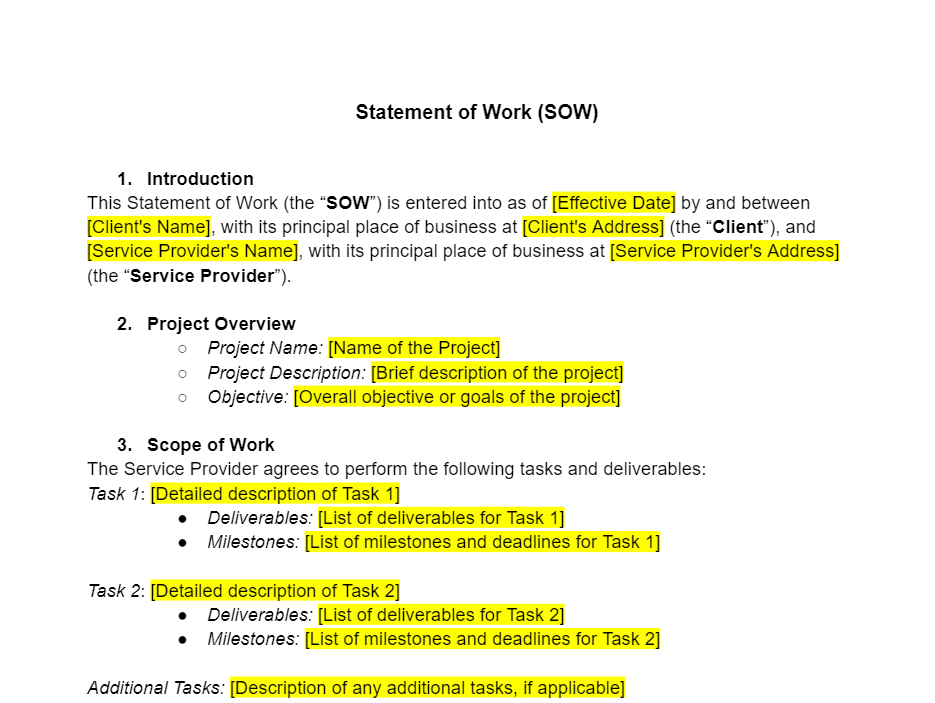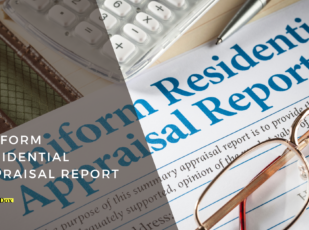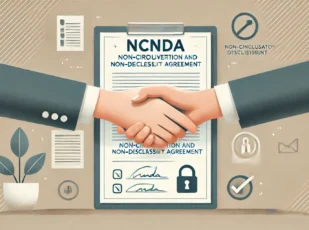
Statement of Work Template
15 Downloads
Commercial
February 17, 2025
Sayantani Dutta
A statement of work (SOW) is a detailed document designed to define the terms, objectives, and parameters of a project. It is normally built on the mutual understanding of two parties, where one is a customer and another is a supplier, defining the project plan, scope, and deliverables.
This document is important to avoid scope creep, ensure accountability, and handle the project in a cost-effective manner. The SOW is a cornerstone of collaboration, especially in joint ventures where one party is outside the internal workforce of a company.
These also ensure that the SOW lays out specific requirements, roles, and responsibilities for clear direction by the team members involved and to minimize and simplify work. Not only does it provide a better means of communication, but it can also serve as an added protection against misunderstandings, disputes, and delays.
What are the Various Types of SOWs?
Statements of Work (SOWs) come in various forms, each designed to meet specific project needs. The most common are design SOWs, level-of-effort SOWs, and performance-based SOWs. Each of them offers different advantages, depending on the objectives and needs of the project.
Design SOWs
A design SOW focuses on the making and development of a product or service. Such an agreement outlines detailed tasks that include researching, prototyping, and testing phases. The contractors are responsible for delivering designs to meet pre-defined requirements.
Level of Effort SOWs
Work Effort Level SOWs are sometimes referred to as time and material agreements. The amount paid in this contract is determined by the hours spent and the material used. This structure is appropriate for uncertain timeliness and resource costs, allowing for changes as the project goes on.
Performance-Based SOWs
A performance-based SOW prioritizes project outcomes over specific processes. The emphasis it puts on achieving defined goals and objectives results in placing substantial responsibility on the contractor to meet these targets. This kind of agreement is specifically helpful with projects where results are the priority rather than the methods chosen to accomplish them.
Key Elements of an Effective SOW
Overview of the Project
Give a high-level overview of the project objectives and goals.
Period of Performance
Specify the duration of the project and any performance benchmarks.
Scope of Work
The scope of work identifies the tasks and services required to complete the project. It also clarifies what is outside the project’s boundaries, ensuring both parties understand the extent of their commitments. Ambiguities are reduced by clearly defining responsibilities.
Timelines
The project timeline within an SOW document provides clear deadlines for each milestone and the entire lifecycle of a project. This includes the date the agreement is effective and by which date the agreement will expire. All these need to be in lockstep with the dates of any project charter or master service agreement.
Deliverables
Deliverables specify the concrete outputs expected from a contractor, for example, a report, a product, or a signed document. These are evidence that the tasks have been done according to agreed standards and within the time specified.
Payment Terms
Payment schedules should detail amounts due at each milestone or phase. This structure ensures financial accountability and timely payments throughout the project lifecycle, preventing misunderstandings and ensuring transparency in payment terms.
Quality Standards
Quality benchmarks will set up service delivery and performance expectations. Both parties maintain a focus on achieving high-quality results with these standards in place. It also reduces the potential for disputes between parties, aligning them on success criteria by bringing clarity to quality metrics.
Severability, Termination, and Dispute Resolution
Discuss the provisions that relate to the termination of the agreement and steps that involve a breach of contract. The inclusion of these elements ensures the SOW functions as a legal and practical framework, minimizing ambiguities and risks.
Specific Requirements
Include certifications, security protocols, or eligibility criteria as needed.
Benefits of a Well-Written SOW
A well-written SOW will bring a multitude of benefits to the customer and supplier relationship. It aligns expectations and reduces risks as it brings a structured approach to managing operations and business processes.
Risk Mitigation
The SOW minimizes disputes by setting clear expectations for responsibilities and performance. These parameters reduce the possibility of conflicts caused due to unfulfilled deliverables and undefined roles as part of that agreement.
Budgetary Control
The inclusion of a detailed payment schedule and cost assumptions helps control project expenses. Fixed costs allow for advance expenditure agreements and eliminate surprises in financial planning.
Prevention of Scope Creep
One of the most difficult problems to handle in project management is scope creep. A well-defined SOW doesn’t allow for unauthorized changes, keeping the project within its original boundaries.
Collaboration Improvement
Whenever people from different organizations work together, a SOW acts as the bridge that links the resources of everyone involved. It sets up workflows and establishes rules that all parties involved, including outside vendors, will follow.
SOW vs. Scope of Work vs. Master Service Agreement (MSA) vs. Request for Proposal (RFP)
While their usage often overlaps, a statement of work, scope of work, and master service agreement are all applied in different phases of project management, and knowing how each differs from the others is important.
Master Service Agreement
An MSA is a more comprehensive document describing the fundamental relationship between parties. It governs terms such as overarching terms, including payment terms, dispute resolution, and warranties.
This contrast shows up on the SOW side of the equation, where it’s usually appended to the MSA as a narrower agreement focused on particular project deliverables.
Scope of Work
The scope of work defines the parameters of what a project entails to ensure the vendors are aware of the functionality and objectives behind the service being delivered or products being sold. This lets the vendors calculate whether they can fulfill the project requirements before committing themselves to the contract.
Request for Proposal (RFP)
A request for proposal, also called an “RFP,” is a document used in the initial phases of procurement. It aims to attract bidders for services needed for a particular project. This document outlines the scope of the project, evaluation criteria, terms of the contract, and how a vendor can present their proposal.
The RFP focuses on finding the right vendor, while a statement of work is issued as a follow-up to an RFP. A statement of work is developed for the explicit definition of the project lifecycle once the vendor has been selected, specifying certain obligations and deliverables.
Risks Involved in Drafting a Statement of Work
While the statement of work is a vital document, the accuracy of its drafting and clear articulation of responsibilities ensure its efficacy. There is a risk involved with misalignment of expectations when the scope of work cannot be explained properly and important aspects are not represented, leading to misunderstandings that raise disputes.
Another significant risk involves undefined revision allowances. If the statement of work doesn’t indicate how many revisions are allowed, then the client may ask for too many changes, causing delays and straining resources. While revisions are an expected part of any project, they must be accompanied by cost-effective and time-conscious boundaries to prevent scope expansion.
Another source of trouble is the lack of detail in the SOW on pricing or delivery schedules. Ambiguity regarding the services, materials, or timelines required makes it difficult to accurately estimate costs and completion dates. This issue might lead to unexpected costs or delays, which might hinder the project lifecycle. Clear details set at the outset provide a more realistic project charter and timeline.
The statement of work should be legally enforceable. All parties concerned must sign a SOW before any work commences. Without the appropriate signatures, it is not a legally binding document and opens the parties to break the contract at will.
The SOW formality protects both parties—vendor and client—while providing a mutual commitment to the terms of the agreement. This includes disputes caused by poorly assigned responsibilities or risks.
A good SOW should clearly outline which party is responsible for specific aspects of the project, such as the execution of the budget, timelines, and quality standards.
If not explicit in the terms around project scope, roles, and responsibilities, the risk is that one party bears unintended burdens, causing conflict. Such issues can only be mitigated if the roles are defined clearly and the document addresses potential risks to streamline workflows and avoid future disputes.
Templates and Resources
A good SOW is a project management tool and a safeguard against misunderstandings between the parties contracted to each other. A statement of work template helps you maintain consistency across different projects, especially when working with the same client or vendor on multiple projects.
Templates ensure uniformity while leaving space for customizing the T&Cs to the needs of each project.
Each clause and provision in the SOW should be well-defined so there is no scope for misinterpretations.
A clear and concise SOW aligns interests and objectives while reducing disputes. It assures both parties share the same view of project success. Structured templates give teams the freedom to work with confidence and clarity through even the most complex projects.
Download a Customizable SOW Template with a Free Trial of FreshDox
Get access to a free statement of work template with a free 7-day trial of the FreshDox platform. Don’t waste your time trying to create a SOW template from scratch on Google Docs or Microsoft Word. Our professionally designed templates are easy to edit and download in PDF or Word formats. Show your service provider your professionalism and sign up for a Basic or Premium account at FreshDox. Browse of catalog of templates for business and download whatever you need!
Related Templates
Discover more templates that align with your needs and preferences.

Ready to Sign Up?
Sign up for FreshDox.com’s 7-day trial and discover why so many individuals and businesses trust us for their legal document template needs.
- Cancel any time
- 7-day free trial
- From 300+ Customer Reviews
















